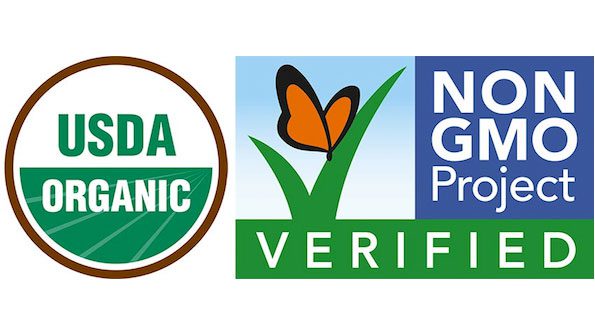Current USDA Rules on Bioengineered (GMO) Food Labeling


Under the National Bioengineered Food Disclosure Standard, which was finalized in 2018 and fully enforced starting June 23, 2025, food manufacturers, importers, and certain retailers are required to disclose the presence of bioengineered (BE) ingredients in food products.
Key Points of the Standard:
- Terminology Shift: The term “bioengineered” has officially replaced “GMO” on food labels. Foods may also be labeled as “derived from bioengineering.”
- Definition: A bioengineered food is one that contains detectable genetic material that has been modified through laboratory techniques and cannot be created through conventional breeding or found in nature
- Disclosure Methods:
- Text on the package (e.g., “Contains a bioengineered food ingredient”)
- USDA-approved BE symbol
- Electronic or digital link (e.g., QR code)
- Text message instructions
- Small manufacturers may also use a phone number or web address
- Exemptions:
- Foods where the modified genetic material is not detectable
- Animal products (e.g., meat, eggs, milk) from animals fed bioengineered feed are not required to be labeled
- Restaurants and similar retail food establishments are exempt
- Updated List of Bioengineered Foods: The USDA maintains a list of crops and ingredients that are commonly bioengineered. As of the latest update, this includes items like corn, soybeans, sugar beets, and certain varieties of squash and papaya.
Reference: https://www.ams.usda.gov/rules-regulations/be
Understanding Non-GMO Labels
Voluntary labels indicating that foods are non-GMO are widely used in the marketplace. One of the most recognized indicators is the USDA Organic label. Foods certified under the USDA’s National Organic Program must meet strict standards that prohibit the use of bioengineered technology in both production and processing. As a result, organic certification also means the product does not contain GMO ingredients.
In addition to organic certification, companies may choose to label products as “non-GMO” or “not made with genetic engineering.” The most widely used voluntary label is the Non-GMO Project Verified seal. To earn this verification, products must contain no more than approximately 0.9% genetically engineered content by weight, a threshold similar to that used in the European Union for mandatory labeling.
To ensure compliance, the Non-GMO Project requires traceability and segregation of ingredients throughout the supply chain. Their “risk list” includes crops and ingredients for which bioengineered varieties are commercially available, such as:
- Alfalfa
- Canola
- Corn (except popcorn)
- Cotton
- Papaya
- Soy
- Sugar beets
- Apples
- Potatoes
- Squash (not widely grown)
- Animal-derived ingredients
- Various processing and production inputs
For products containing at-risk ingredients that make up 5% or more of the product’s dry finished weight, testing of either the ingredients or the final product is required to verify non-GMO status.
Updated June 2025
